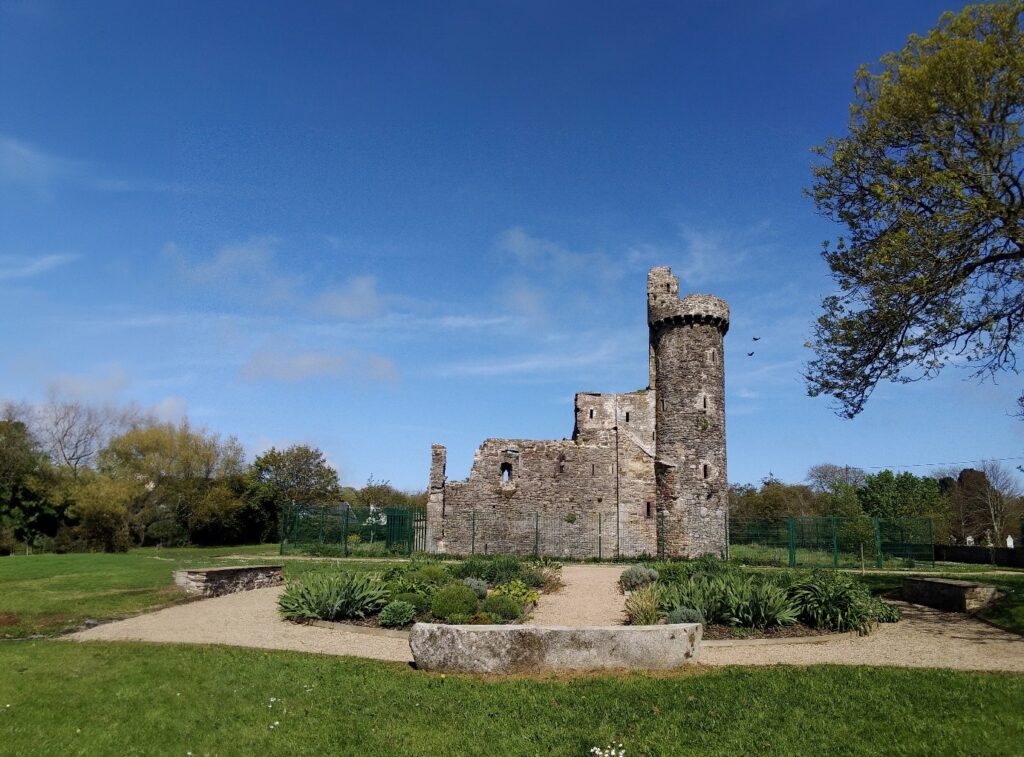A special Heritage Council publication featuring stories from heritage officers in every county is being launched today to mark 25 years since the Heritage Officer Network was founded. The booklet, ‘Opening the door to Ireland’s heritage’ details one key heritage project from each local authority from the last three years which collectively, highlight the enormous contribution the Network has made to the preservation of our heritage over the last quarter of a century.

The booklet tells the story of how Fethard Castle in southwest Wexford was conserved after it was abandoned in 1922 and subsequently fell into ruin. It was built in the 15th century on the site of a previous castle dating back to the 12th century most probably by the Bishop of Ferns as a summer residence. A really important and unique medieval complex, the Castle is a national monument. Conservation works were previously undertaken at the Castle during the 1990s but they were not finished. For health and safety reasons, a fence was put up and this remained in place for many years.
Former Wexford Heritage Officer Catherine McLoughlin saw the need for an intervention for this important monument to make it safe and bring it back to the heart of the village, and following several years of hard work and perseverance, the works were completed in 2023 with public access restored to the exterior. The ruin was already popular with tourists who use the green areas in front and beyond of the building to picnic and rest, and it’s hoped that the conservation works will draw even more people to enjoy the grounds and the views of the Castle.
In a partnership between the Heritage Council and local authorities, the first heritage officers were appointed in 1999 in Kerry, Sligo and Galway with the aim of raising awareness of heritage issues within the local authority and among local communities. Since then, the heritage officer network has become synonymous with the protection and promotion of Ireland’s heritage and for the first time in 2021, every local authority in the country had appointed somebody to the role.
While highlighting the important work they do, the stories in the publication also offer a stark insight into what may have been lost were it not for the heritage officers. Mangan’s Clock in the heart of Cork city may have fallen into disrepair. The most historic buildings in Ballyshannon or Listowel may have been left derelict and allowed to crumble. The natural beach and dune habitats along the coast of Wicklow may have become irrevocably degraded and the craftsmanship of dry-stone walling on Inis Oirr may have receded.
The publication can be read in full on the Heritage Council website here:
https://www.heritagecouncil.ie/content/files/Opening-the-Door-to-Irelands-Heritage.pdf
More information about the Heritage Officer Network is available here:
https://www.heritagecouncil.ie/our-work-with-others/county-heritage-officers
Speaking on the launch of the booklet, Chair of the Heritage Officer Network, Amanda Pedlow, said:
“It is deeply satisfying to see documented in this publication the influence of the Heritage Officer Network in shaping our approach to heritage conservation and protection. Although we work as individuals at local authority level, what is clear from these pages is that the real strength of the Network is in the collective. These stories cover only a snapshot of recently completed projects from current heritage officers, so when we factor in the hundreds of past projects completed since 1999, it brings into the focus the enormous impact that the Local Authority Heritage Officer Programme has had.”
Chairperson of the Heritage Council Martina Moloney added:
“I have had the pleasure of working extensively with our Heritage Officers over many years and am constantly amazed by the shear variety of their work which is excellently captured in this beautiful publication. Not only do they provide advice, guidance, and information on all aspects of heritage, but they also secure funding, undertake research, collect data, and develop and lead a multitude of highly impactful and engaging projects. Raising awareness locally, Heritage Officers inspire communities to value and take ownership of their important local heritage in all its forms. What their work achieves, ultimately, is that it opens the door to our heritage for people across Ireland and further afield, so that it can be enjoyed and appreciated by everyone.”
John Mulholland, Chair of the CCMA Rural Development, Community, Culture and Heritage (RCCH) Committee also attended the launch, and said:
“What has always stood out to me about the Heritage Officer Network is the range and number of individuals, groups and funders involved in the projects they undertake. It is very difficult to keep such a diverse range of interested parties singing off the same hymn sheet and getting the job done. This is the silent but tireless work of the Heritage Officers at play, to whom we owe a great debt of gratitude. On behalf of the CCMA, I commend them for their dedication.”



